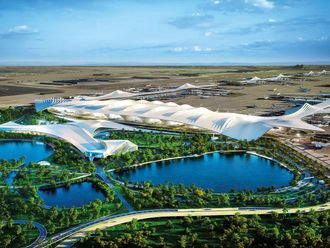The Gulf states have, admirably enough, succeeded in streamlining their rankings in the latest human development index (HDI), a cornerstone of the annual Human Development Report, brought out by the United Nations Development Programme (UNDP).
The report is vital for its very subject — human development — and which is the ultimate objective of any nation. What’s more, three of the Gulf states — Saudi Arabia, Bahrain and Kuwait — managed to move into the top echelons of human development measures. In the 2013 report, only Qatar and the UAE rated entries in this exclusive category.
The HDI is made up of three variables, which are life expectancy at birth, education and income on a purchasing power parity basis (PPP). Not surprisingly, some of the Gulf countries do exceptionally well on the income variable.
Looking at the results, Qatar solidified its regional supremacy by advancing five notches to clinch the 31st position globally. According to the 2014 report, the per capita income in Qatar on the basis of PPP amounts to a staggering $119,020 (Dh436,803) and second to none.
The amount compares favourably with that of $87,500 per annum recorded in the 2013 report. This has allowed Qatar to collect more points — 0.851 and up from 0.834 points out of a possible 1.000.
Still, the biggest surprise concerns Saudi Arabia, which saw its ranking progressing by 23 notches, and thereby helping it secure the 34th spot worldwide. Like Qatar, the income level played a critical factor, rising from $22,616 to $52,109 per annum between the two reports.
Population growth rates
Undoubtedly, the credit is chiefly attributed to the steady oil prices and production volumes. Also, there has been the contribution that stems from the to absence of sharp population growth rates. (This also stemmed from the axing of overstaying foreign workers that the country has been working on for some time.)
Additionally, Saudi Arabia experienced a rise in the average life expectancy of its citizens, from 74.1 to 75.5 years, thanks in part to the proliferation of modern health care services throughout the kingdom. Undoubtedly, the country’s progress in the ranking is anything but normal.
For its part, the UAE improved its ranking by a single notch, which is a natural development, to assume 40th ranking.
Having dropped six positions in the 2013 report, Bahrain reversed course by advancing four rankings to reach the number 44 spot. The credit for this turnaround stems from stronger income together with a higher median life expectancy.
Oman managed to advance by 28 spots to No 56 among the 187 nations reviewed in the study. The sultanate is top in the human development category.
Notably, the standings of the Gulf states are ahead of several EU countries. Certainly, this is noteworthy in the age of globalisation and where competition among countries is truly global in nature.
Health services
Going forward, the Gulf states stand the chance of improving their positions further on HDI on the back of sustained efforts to improve education and the health services. The mushrooming of advanced health care services together with trendy lifestyle practices help in keeping the elderly healthier and thereby living longer.
Likewise, the relatively high oil prices and revenues flowing from it guarantee a continuation of investment on infrastructure projects. The result would be solid economic development and a possible rise in per capita income. Suffice to say that the Gulf producers, with Saudi Arabia at the helm, lead the world in the production, and more importantly, in the export of crude oil. Qatar is credited to be the largest exporter of liquefied natural gas or LNG.
Undoubtedly, a country’s wealth cannot be measured by the number of skyscrapers. But certain things like advanced transportation means serve to improve the quality of life. The same holds true for the proliferation of clinics, offering specialised health care, and modern educational institutions.
The writer is a member of parliament in Bahrain












